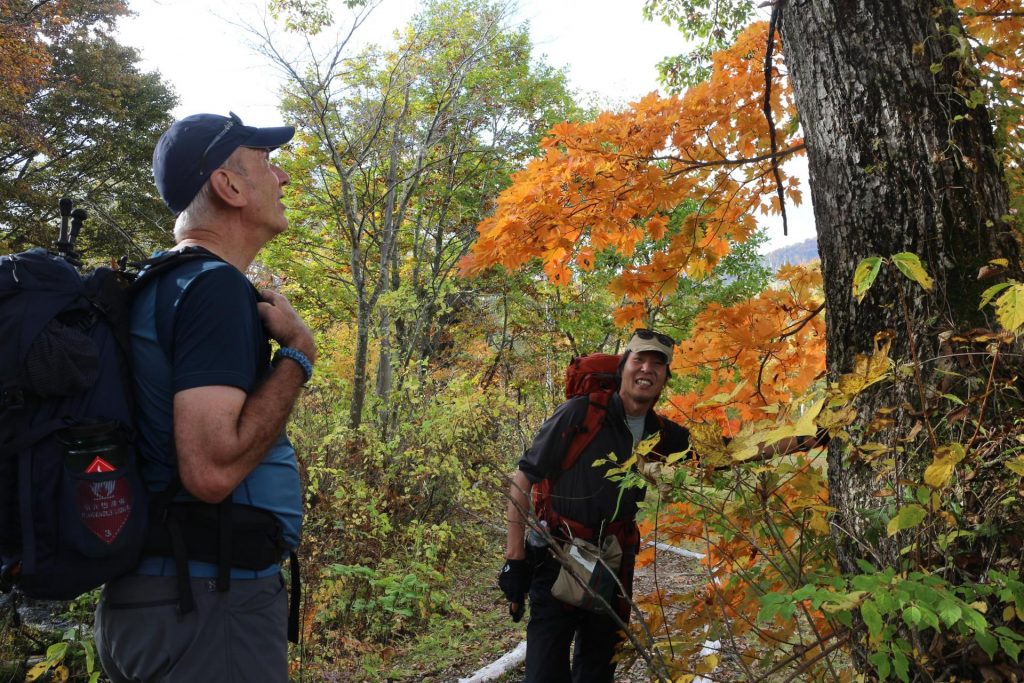
We’re waiting in a rolling, forested landscape, not far from the Douwakan (Kurohime Fairy Tale Museum). Just to our west is Mt. Kurohime; further away to the north is the tall peak of Mt. Myoko, just across the nearby border with Niigata. Our leader—or “trainer”—Chie Kosuga starts with a quick introduction, lets us introduce ourselves, then outlines the course ahead for the next three hours.
“We’re going to be walking about 1.5 kilometers,” she says. Seems like a lot of time for a short trek, I think. She seems to read my mind: “We’re not going on a hike today,” she says.
We’ll be walking, slowly as the main goal is forest therapy. The concept of shinrin-yoku, or forest bathing, has become well-known globally and here in Shinano-machi—in northern Nagano—is one of the centers for the emergence of this approach of using nature to relax and heal.
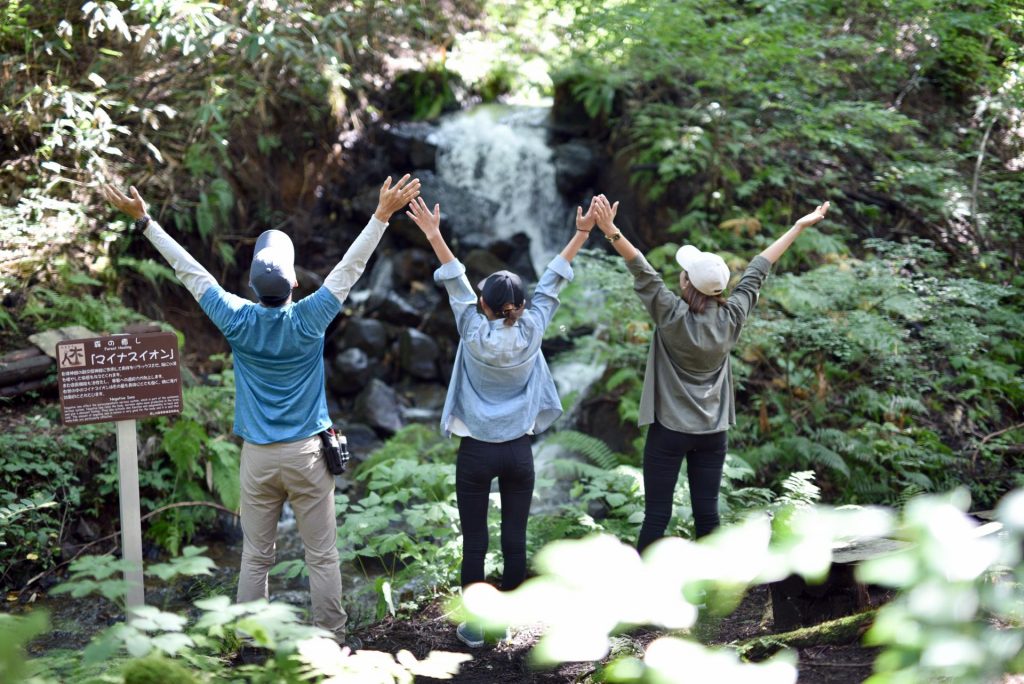
In addition to the locals, Ms. Kosuga and supporting guide Kohei Nishida, most of the others in our group of five are from metropolitan areas. It would be unusual to have both guides in an international group this size speak English well, but the tours usually include Japanese urbanites.
“People from cities are usually under a lot of stress, and are surrounded by bad air. Today we’re going to introduce them to different smells of the forest, many of which are both relaxing and healing.”
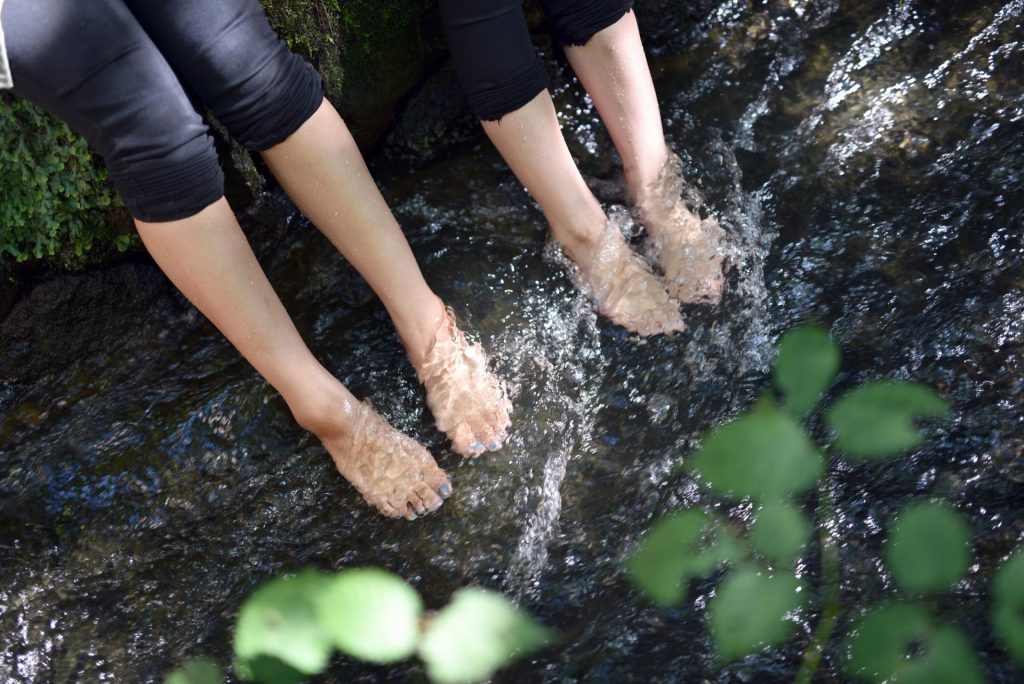
As we move slowly through the woods, the subtle differences in smell become more pronounced as smog-clogged noses begin to pick up more and more subtleties: damp earth and the varying fragrances of coniferous and broadleaf trees. Nishida-san picks a small frond of yomogi, Japanese mugwort, a plant used for both food and medicinal purposes, with a unique blend of sweet and bitter and green fragrances.
“It grows almost like a weed—it’s so common,” Mr. Nishida says. “But it’s also very special for its smell and the flavor it adds to local foods like sasadango (mochi filled with anko bean paste and wrapped in bamboo grass leaves).” He encourages us to breathe in deeply, not just the fragrance of the yomogi, but of the forest air itself.
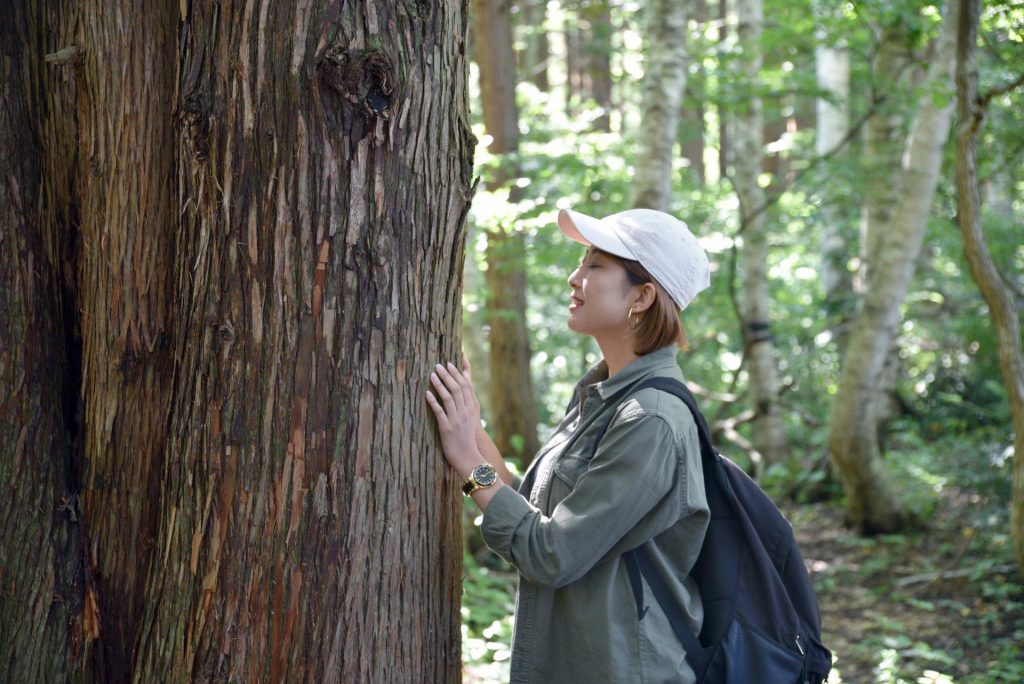
As we experience the different smells, the trainers encourage us to look, touch and take a moment to really listen to the sounds around us. Bird song, babbling waters and rustling leaves all come more and more into focus.
“Our goal is to use all five senses,” Ms. Kosuga says. “This really helps to relieve the stress that people have in their busy lives, where they don’t find time to really enjoy what is around them.” Then she hands me a yoga mat.
“It’s time for what we call mori ga counseling—or forest counseling,” she says. Everyone is told to find a place that they find relaxing: perhaps under a low tree, out in the open or where there is a particularly soothing fragrance. “Many people are tense or hesitant at first,” she says, “But by the time we do the ‘counseling’ they’re usually relaxed and enjoying the session.” After this relaxing break we enjoy some ocha (brown tea) and handmade sweets, as we continue our slow return to our starting point.
Return to the Forest
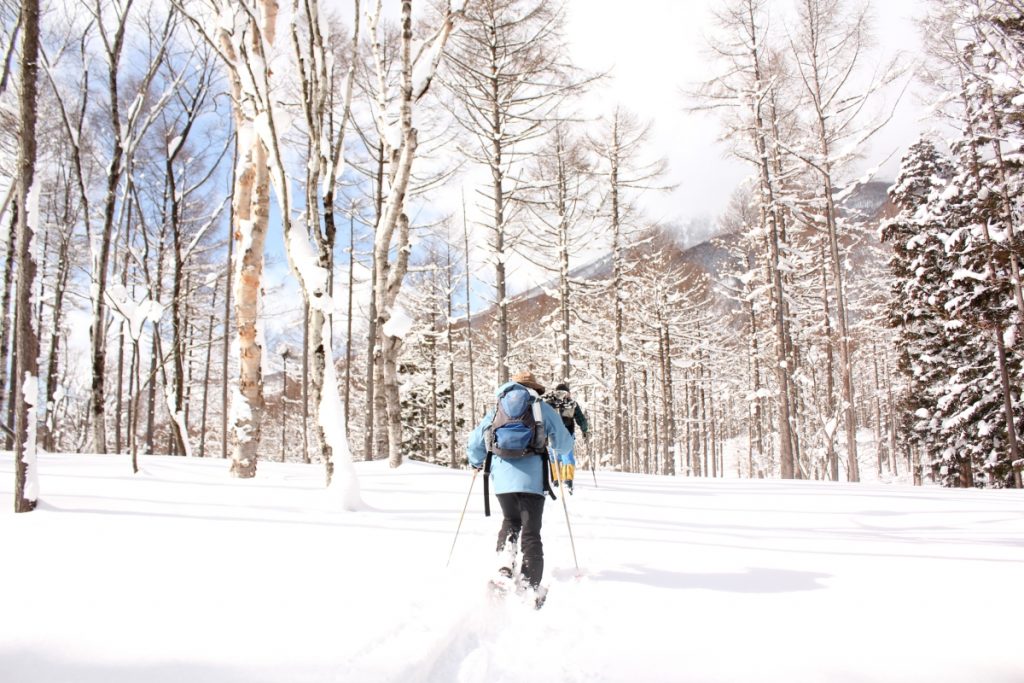
Six months later, we return for another exploration of the Shinano-machi forest, this time along the south shores of Lake Nojiri. We engage in many of the same kinds of activities as we did in summer, but now on snowshoes. It’s both familiar and very different—again a short hike of more than three hours, but now in a white world without green leaves or flowers. That doesn’t mean there are no unique smells, sounds and sights—such as the unique sticky touch of a tightly wound sapling’s buds, not yet open but covered in a protective gooey material and ready for spring’s warm winds. The pace, the slow enjoying of simple natural wonders…I’m feeling, well, pretty relaxed and healed.
Shinano-machi is a beautiful setting for this, without a doubt. But how did this rural area, on a plateau just outside Nagano City to the south, and surrounded by high mountains and ski resorts, become the epicenter of this growing interest in forest healing (after all, when the Wall Street Journal did a piece on shinrin-yoku, this is where they came)?
“The formal system began in 2002,” Ms. Kosuga explains. The popularity of skiing was going down (Kurohime Kogen Ski Area is within Shinano-machi, while Tangram, Madarao and the Myoko ski areas are all adjacent to it), so the area needed a new activity to draw visitors.
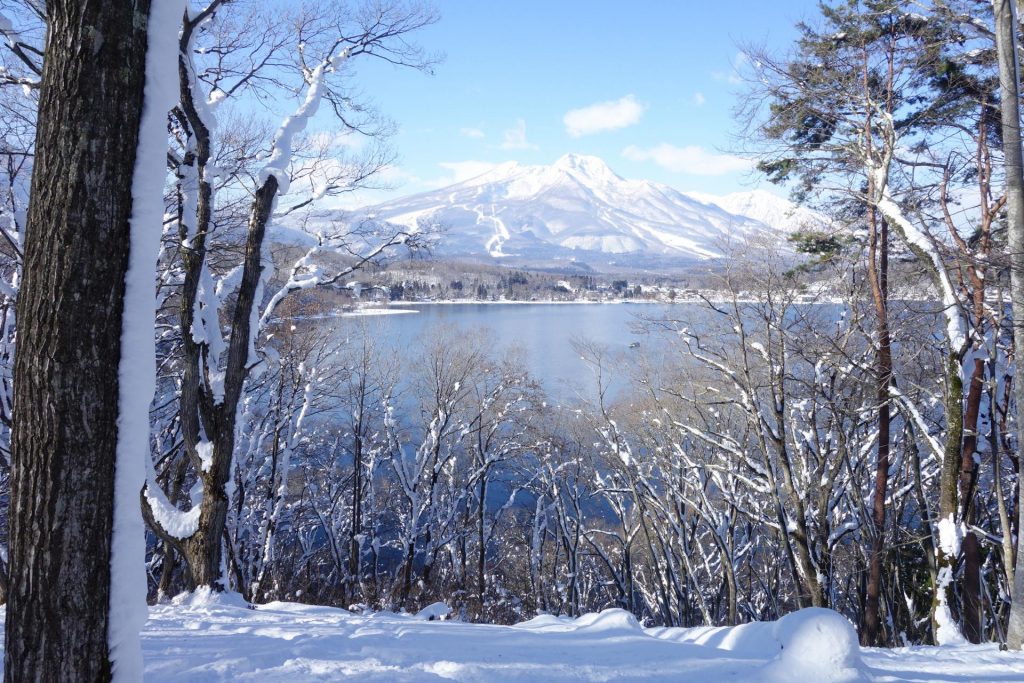
In the late 1990s, when forest therapy began in Shinano-machi, some local guides and local resident C.W. Nicol often had casual meetings and talked about how they can use the forests around Shinano-machi for locals and visitors. They received support from Nagano Prefecture in 2002, which was the official start of the forest therapy project in Shinano-machi. Some of them are still trainers at the center.
She stresses, though, that pure tourism is not the goal for forest therapy in Shinano-machi. “It is an attraction, but we wanted something deeper on both the physical and spiritual levels,” she says. “We really wanted to create something that could heal urban people, as well as something people here would also enjoy. I can really say that this is the birthplace of forest bathing.
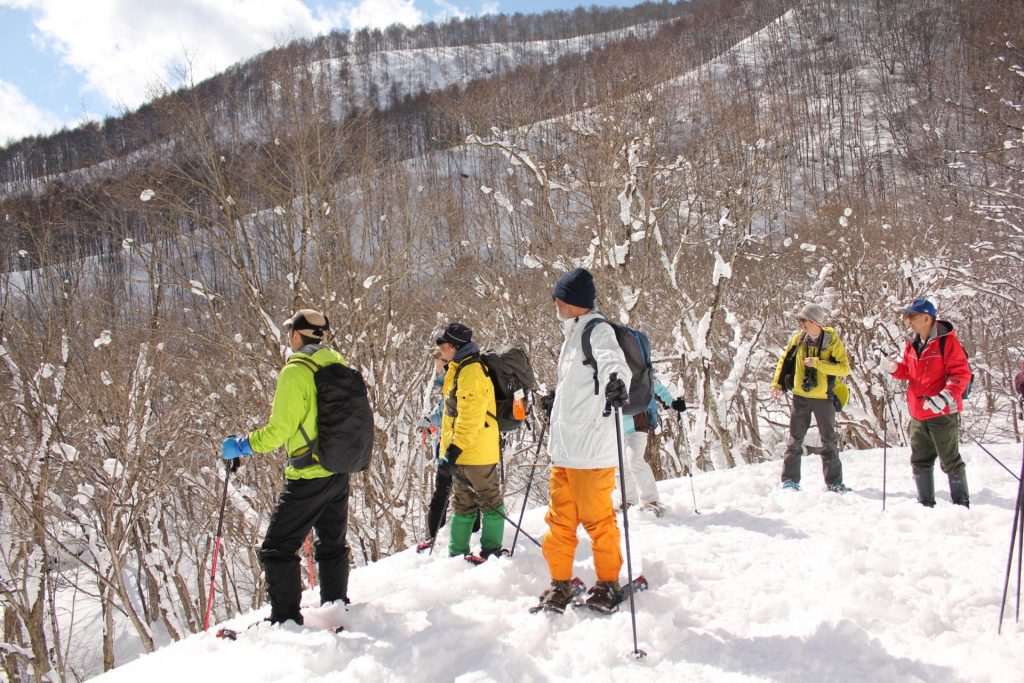
You can’t get far in talking about forest therapy, or indeed about the forests in Shinano-machi without hearing C.W. Nicol’s name. In the 1980s and 90s, it wouldn’t be necessary to explain who he was, as he was on television all the time in Japan, talking about nature, yes, but also appearing in ham and whiskey commercials. A writer, musician, martial artist and, most importantly, naturalist, Mr. Nicol was arguably the most famous foreigner in Japan (in fact he became a Japanese citizen in 1995), and certainly Shinano-machi’s best-known citizen. He was definitely a man of strong opinions, something not all the locals agreed entirely with, yet most would say he helped move things ahead for the region. I had the pleasure many years ago of helping him set up a computer, which was followed by a delightful wine-filled lunch and a deep discussion on the perils of cement-coated riverbanks and mono-species forest plantings.
To find out more about that last point in particular, we visited the Afan Forest Office, a striking building set on the edge of the forest, made entirely of sustainable forestry products. The manager, Wataru Ohsawa, explained the Afan Forest project, and Nicol’s role in establishing it.
“Nicol-san set up the Afan Forest (afan being both a river and a forest in Nicol’s native Wales) way back in 1986, in order to save the forest,” he says. “He saw the beauty of the Japanese forests, and felt that there was a special quality that he thought had to be protected.” So he began to buy up forests in a time when much of the area was being cleared out and replanted, often with just one species of tree—good for lumbering, not great for the forest ecology. The continued purchases—funded in large part by those appearances in commercials and other activities—eventually stretching to some 34 hectares of forest.
“He started forestry activities to clear out the brush and thin the tress,” Mr. Ohsawa explains. “He wanted to increase the biodiversity of the forest, which would also protect wildlife. By restoring the forest, more light could come in, which meant more plants, flowers, insects and therefore more birds and animals. In restoring the forest, they would also see how animals would respond, and adjust accordingly.
“He also wanted to create a system where others could carry on in the future,” he says. “So in 2002, the C. W. Nicol Afan Woodland Trust was formally established.”
An aerial photograph shows clearly what has been accomplished; outside the Afan area, the trees are huge swaths of single colors and shapes—mono-species planting. The Afan forest, by contrast, is multi-colored, with a great variety of shapes just like the diversity found closer to ground.
The area is used for a wide variety of activities such as children’s camps and study activities. Since 2016, the Afan Horse Project was also begun, with two horses now not only providing a unique activity for, but also actually working in the forest, helping to drag out cleared trees and brush. “They’re really part of the forest restoration project—this is not just a horse-riding experience!” he says. In fact, he adds, the forest in general is not a place for big tours. “It’s the same for all the activities here; the whole key is balance.”
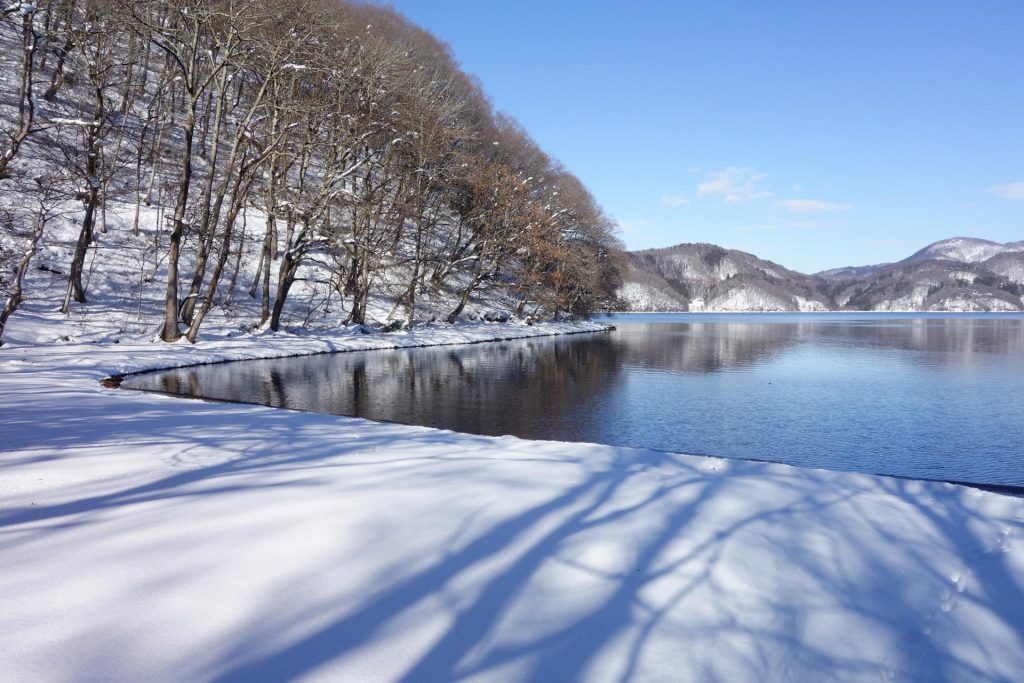
Essential Info
Shinano-machi Visitors Guide
Explore more about the beautiful Shinano-machi area at the tourism departments official website with activities and travel information for every season.
Forest Therapy AT Shinano Woods-Life Community
Join a forest therapy tour in Shinano-machi. Call, e-mail or visit their website (Japanese only) for details. Tel: 026-255-5925
The C.W. Nicol Afan Woodland Trust
Find out more about C.W. Nicol’s legacy in Shinano-machi, tours, kids programs and more.
Tel: 026-254-8081
About C.W. Nicol
Clive William Nicol was born in 1940 in Neath, Wales. At a young age he traveled to the Canadian Arctic to study the eider duck, then came to Japan in the early 1960s to study both at Nihon University and martial arts. He became a game warden in Ethiopia in 1967 to 1969, establishing the Semien Mountains National Park. Returning to Japan, he became a well-known writer and media personality. He settled in the Kurohime area of Shinano-machi in 1980, where he continued his work in natural restoration, outdoor training and writing. He became a Japanese citizen in 1995, and was awarded an Order of the British Empire in 2005. He is the author of many books in both English and Japanese, including children’s books and writings on the environment in both English and Japanese. He passed away in 2020.





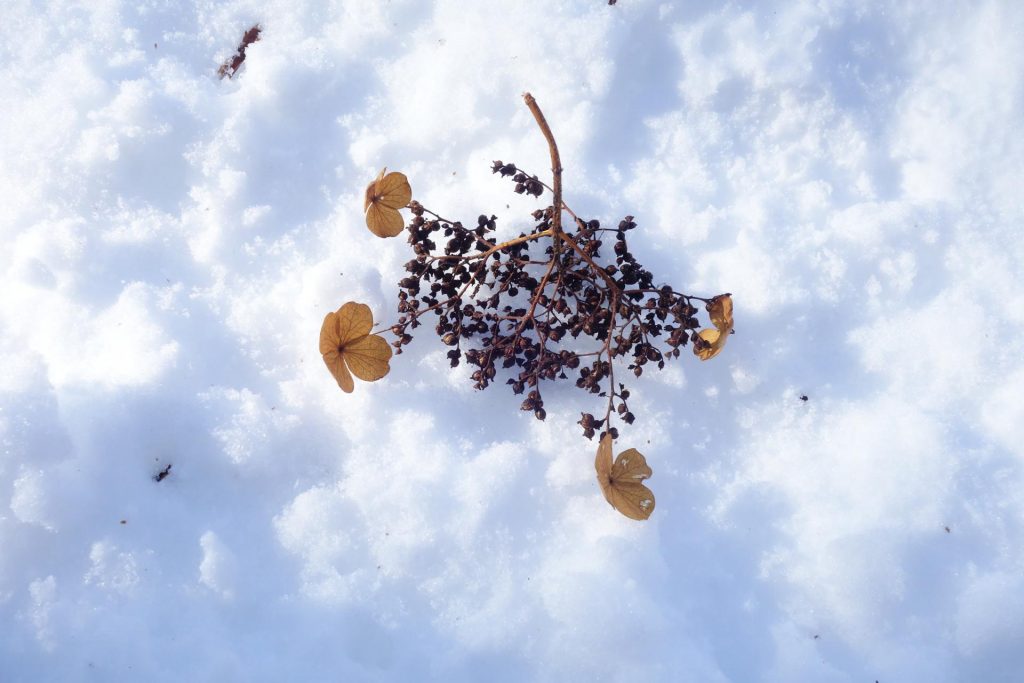
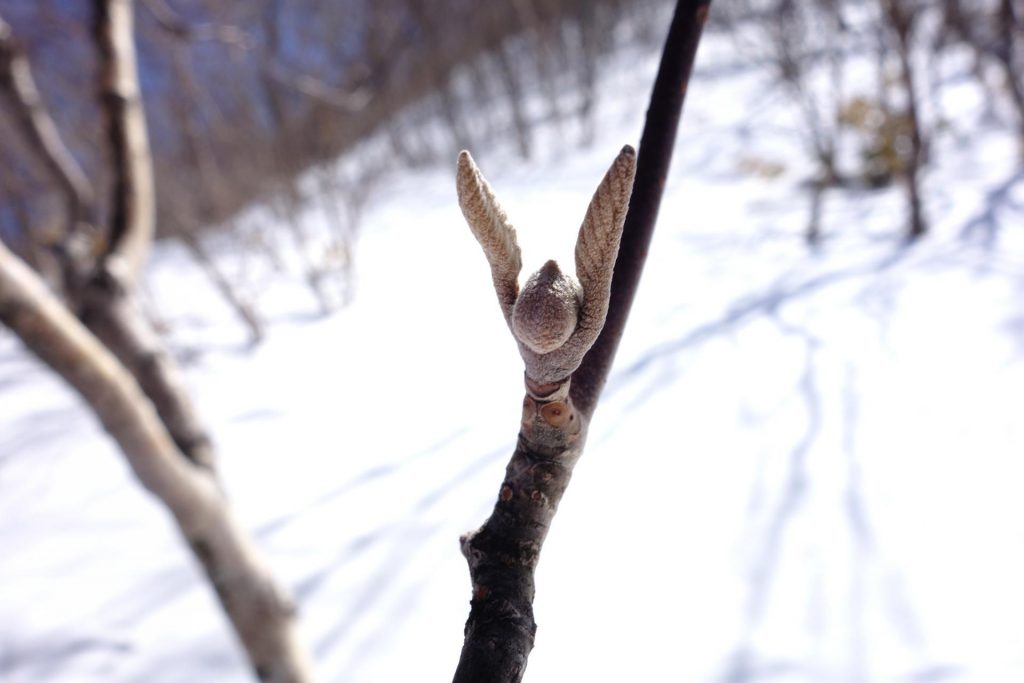
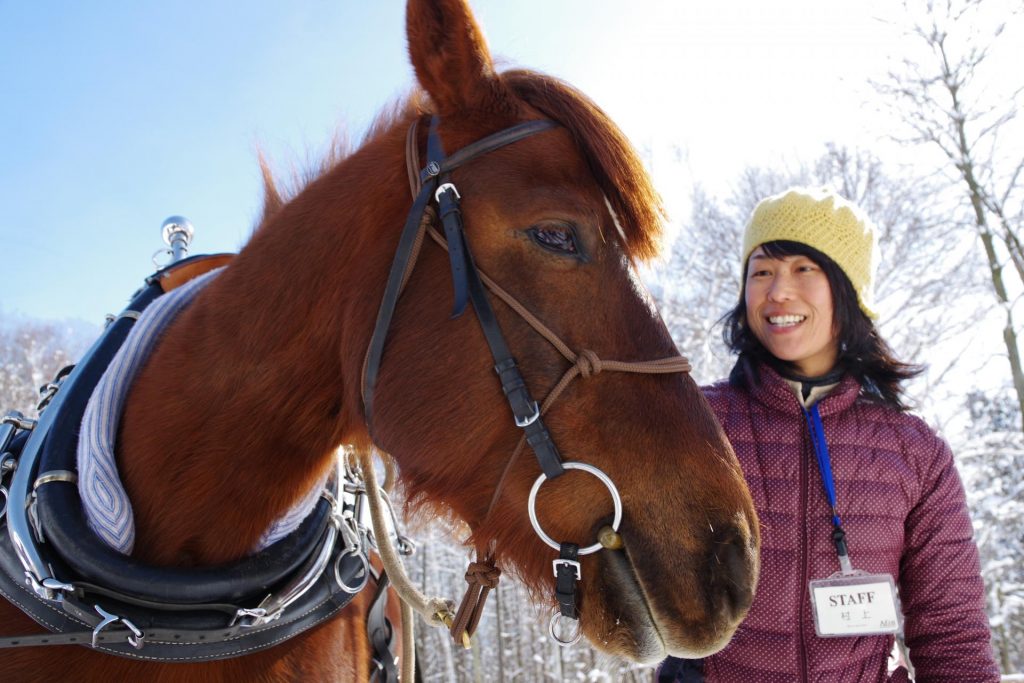
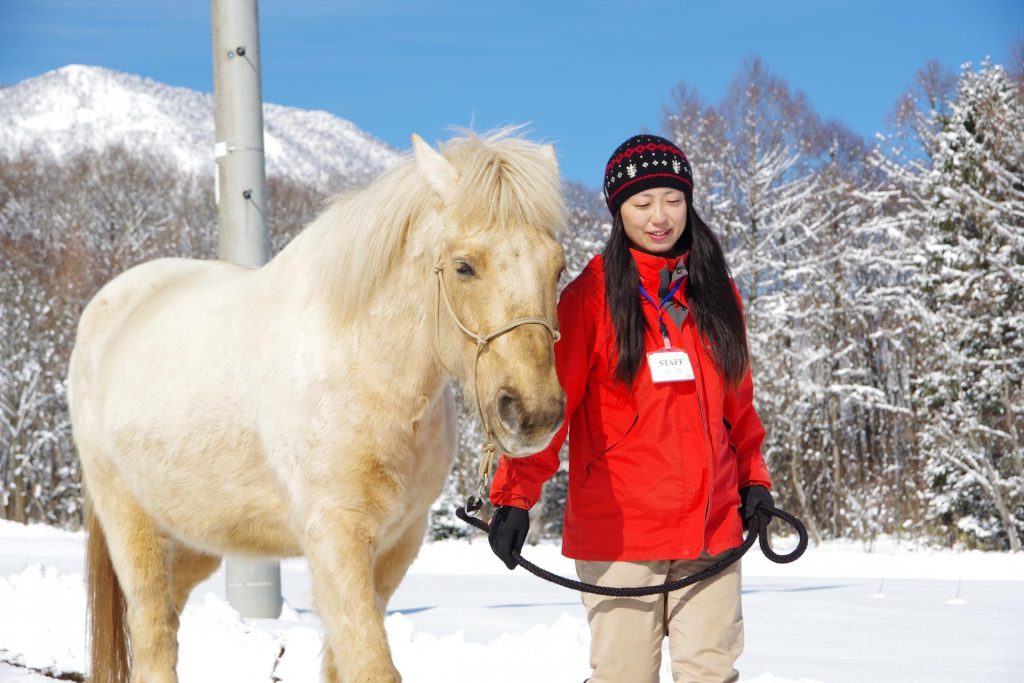
Looks wonderful
Is there a way I can find out how to join a tour ? Thanks Donna